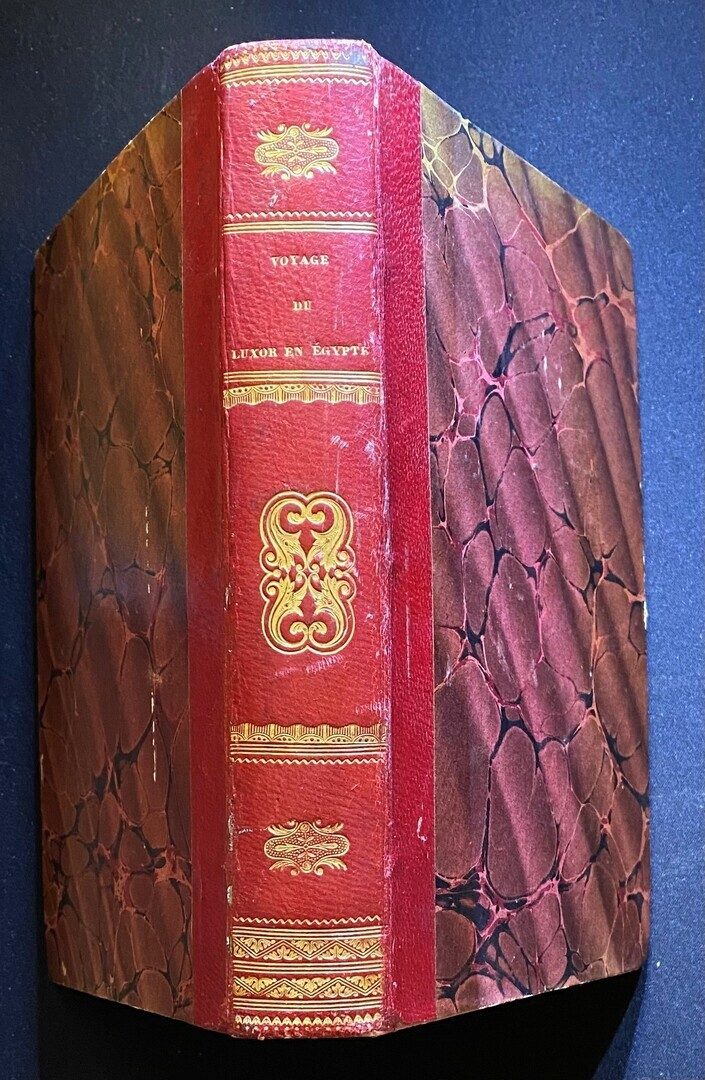Voyage de Luxor en Égypte, entrepris par ordre du Roi pour transporter, de Thèbes à Paris, l’un des Obélisques de Sésostris.
Verninac de Saint-Maur, Raimond-Jean-Baptiste de 1794-1873.
Synopsis
Extremely rare, not at Copac. Raymond-Jean-Baptiste de Verninac Saint-Maur (1794-1873),was a French naval officer who became in 1848 a Minister of the Navy and Colonies,
In 1829 Verninac went to Alexandria to pick up the mission led by Jean-François Champollion, which had completed three years of exploration and studies in the Nile Valley. He took them back to Toulon Luxor Obelisk weighing 230 tons, which had to be transported from Luxor back to France. The Obelisk was given by the Muhammad Ali the governor of Egypt as a gift to France.
Verninac was given command of the expedition on Champollion’s recommendation. With the help of the naval engineer Apollinaire Lebas, Verninac developed the idea of cutting a flat-bottomed barge in half across its center, installing the obelisk, then rebuilding the barge so it could be towed down the Nile and on to France. The obelisk remained on the quay of the Seine for two years before being erected in the Place de la Concorde on 25 October 1836. The story of bringing the Obelisk to France was reorded by Verminac himself in this book.
Bibliographic reference: Hilmy II, 307.








